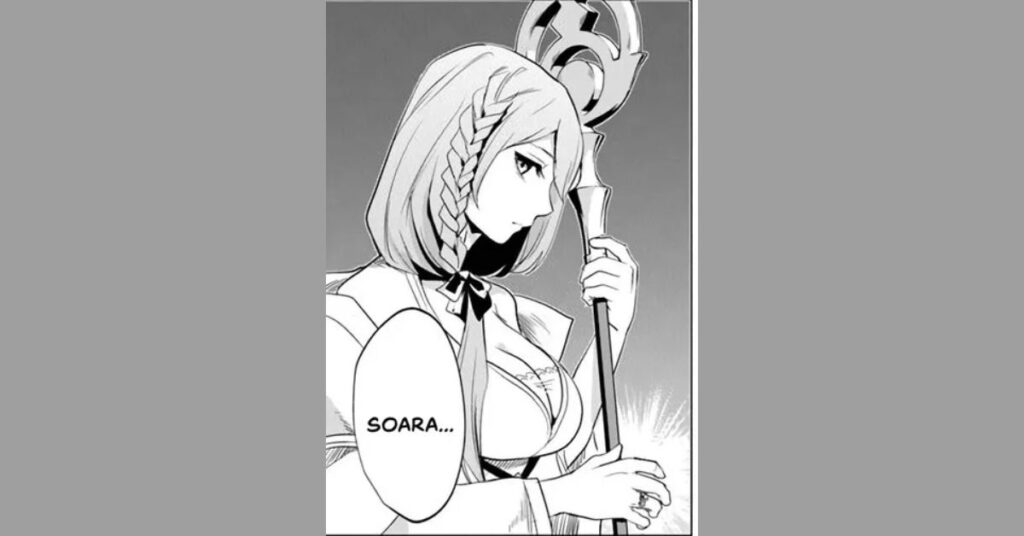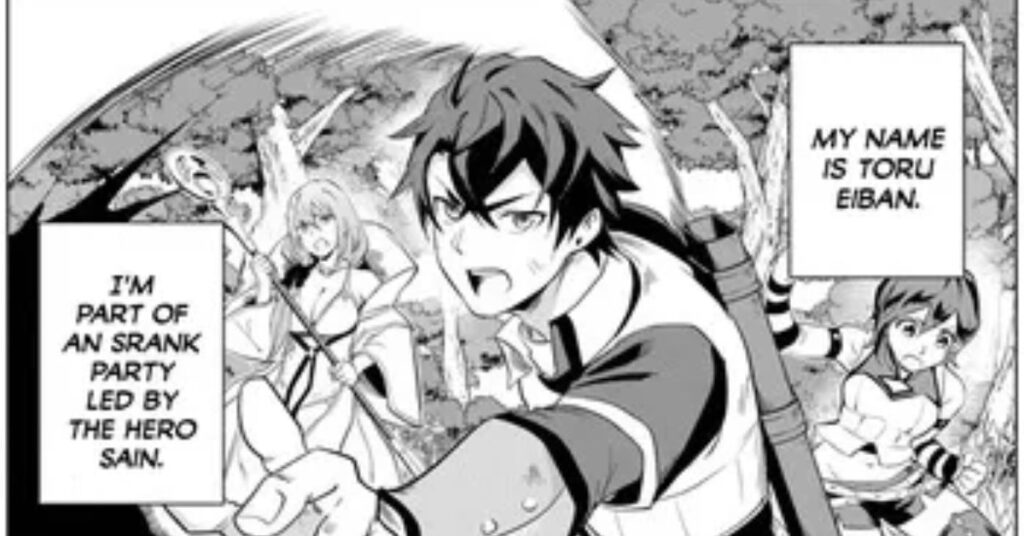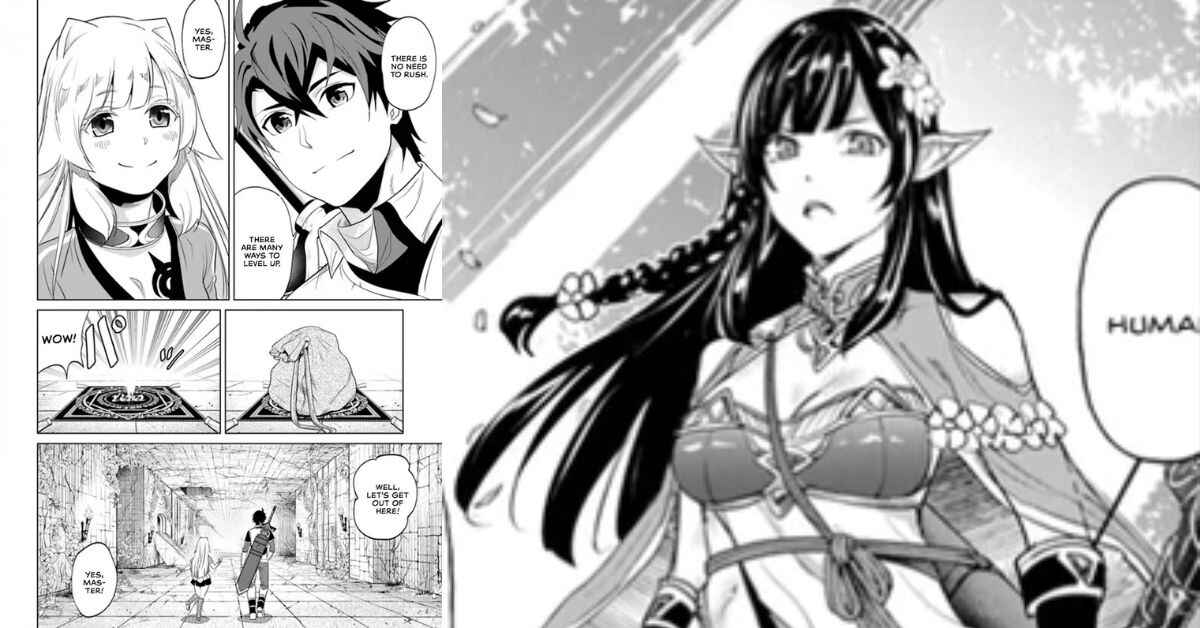Ever wondered what happens when a so-called hero turns out to be the villain? In “A Warrior Exiled by the Hero and His Lover,” we meet Sain, a character who embodies this very twist. Let’s dive into the story of this false hero and his descent into villainy.
Who is Sain?
Sain starts as a self-proclaimed hero candidate and leader of the S-Rank adventuring party, White Fang. He’s not your typical protagonist – far from it. Sain’s journey is a cautionary tale of how ambition, when unchecked, can lead to downfall.
Born in the same village as Toru Eiban, Sain grew up with dreams of becoming a hero. He formed White Fang with his childhood friends, including Toru, Nei, and Soara. But beneath his charismatic exterior lurked a darker nature.
The Fall from Grace
Sain’s path to villainy began with the exile of Toru Eiban from the Hero Party. Why would a supposed hero cast out his childhood friend? The answer lies in Sain’s growing jealousy and desire for power.
Toru’s popularity and natural ability to connect with others threatened Sain’s position. In a move that would define his character, Sain manipulated the situation to have Toru expelled. This act marked the beginning of Sain’s transformation from a hero candidate to one of Toru’s arch-enemies.
The Demonic Eye of Seduction
Sain’s most notorious ability is the Demonic Eye of Seduction. This power allows him to brainwash women of lower levels, forcing them to obey his commands. It’s a chilling reflection of Sain’s true nature – a sociopathic rapist hiding behind a heroic facade.
The use of this ability on his childhood friends Nei and Soara showcases the depths of Sain’s depravity. He manipulates those closest to him, using them for his selfish desires and discarding them when they no longer serve his purpose.
A Puppet of the Demon Queen
As Sain’s ambitions grow, he falls under the influence of the Demon Queen Lisa. Once a leader, Sain becomes a puppet in Lisa’s grand schemes. This relationship highlights Sain’s weakness and his willingness to align with evil for personal gain.
The partnership with Lisa leads Sain further down the path of villainy. He betrays his former comrades, joins the Demon Army, and turns against the very people he once swore to protect.
The Battle with Toru
Sain’s downfall reaches its climax in his confrontation with Toru. The exiled warrior, having unlocked his true potential, easily defeats Sain. This battle exposes Sain’s cowardice and delusions of grandeur.
In a desperate attempt to save himself, Sain begs Toru for forgiveness. He tries to appeal to their past friendship, but Toru sees through the facade. Sain’s true nature as a spineless manipulator is laid bare.
Execution and Resurrection
Following his defeat, Sain faces the consequences of his actions. He’s stripped of his status as a hero candidate and sentenced to execution. The public spectacle of his punishment serves as a stark contrast to the heroic image he once projected.
However, Sain’s story doesn’t end with his death. Through dark magic provided by Lisa, he’s resurrected. This second chance at life only fuels his hatred and desire for revenge, particularly against Toru and humanity as a whole.
The Psychology of a Failed Hero
Sain’s character arc offers a fascinating study in the psychology of a failed hero. His journey from ambitious adventurer to delusional sociopath raises questions about the nature of heroism and the corrupting influence of power.
At his core, Sain is driven by a deep-seated need for recognition and adoration. His inability to achieve this through genuine heroic deeds leads him to seek shortcuts, ultimately resulting in his moral decay.
The Impact on Others
Sain’s actions leave a trail of emotional trauma in their wake. His betrayal of Toru, manipulation of Nei and Soara, and eventual turn against humanity showcase the ripple effects of one person’s selfish choices.
The experiences of Nei and Soara, in particular, highlight the lasting impact of Sain’s abuse. Their struggle to overcome the trauma of being controlled by the Demonic Eye of Seduction adds depth to the narrative and emphasizes the true cost of Sain’s villainy.
The Role of Forgiveness and Redemption

As Sain faces his execution, the theme of forgiveness comes to the forefront. His pleas for mercy raise questions about the possibility of redemption for someone who has committed such heinous acts.
Toru’s refusal to forgive Sain speaks to the complexities of justice and the consequences of betrayal. It challenges readers to consider the limits of forgiveness and the role of accountability in the face of evil.
Sain’s Legacy in the Story
Even after his execution, Sain’s influence on the narrative continues. His resurrection sets the stage for ongoing conflict, with his hatred and desire for revenge driving future events.
Sain’s transformation from hero candidate to unrepentant villain serves as a cautionary tale within the story world. His legacy becomes a reminder of the dangers of unchecked ambition and the importance of true heroic values.
The Symbolism of the Hero’s Equipment
An interesting aspect of Sain’s story is his inability to wield the hero’s equipment effectively. This serves as a symbolic representation of his unworthiness and false claims to heroism.
The rejection by the holy swords and other heroic items underscores the idea that true heroism comes from within and cannot be claimed through mere posturing or manipulation.
Sain’s Impact on the World
Sain’s actions ripple far beyond his immediate circle. His betrayal and subsequent alliance with the Demon Army shake the foundations of the kingdom he once swore to protect.
Villages that once looked to heroes for salvation now view them with suspicion. Sain’s fall from grace erodes public trust in the hero system, forcing a reevaluation of how heroes are chosen and monitored.
The Corrupting Nature of Power
Sain’s descent into villainy serves as a stark reminder of power’s corrupting influence. His initial taste of authority as the leader of White Fang sets him on a path of increasing moral compromise.
The Demonic Eye of Seduction becomes a metaphor for the intoxicating nature of control over others. With each use, Sain loses a piece of his humanity, showcasing how unchecked power can twist even the noblest intentions.
The Role of Choice in Destiny
While Sain blames others for his downfall, his story underscores the crucial role of personal choice in shaping one’s destiny. At every turn, Sain chooses the path of selfishness and betrayal.
This stands in sharp contrast to Toru, who, despite facing exile and hardship, chooses to remain true to his values. Their diverging paths highlight how character is revealed through adversity.
Psychological Manipulation and Its Effects
Sain’s use of the Demonic Eye of Seduction opens up discussions about psychological manipulation and its lasting effects. Victims like Nei and Soara struggle with the trauma of being forced to act against their will while fully aware.
This aspect of the story touches on real-world issues of consent, abuse, and the long-term impact of psychological trauma. It adds depth to the narrative and raises important questions about power dynamics in relationships.
The Illusion of Heroism

Sain’s initial success as a hero candidate explores the gap between appearance and reality in heroic figures. His charisma and self-promotion initially fool many into believing he’s destined for greatness.
This illusion of heroism raises questions about how society chooses its heroes and the dangers of elevating individuals based on superficial qualities rather than genuine virtue.
Redemption and Its Limits
Sain’s story pushes the boundaries of redemption. Even after his defeat and facing execution, he shows no genuine remorse, only fear for his own life. His resurrection and continued pursuit of revenge suggest some individuals may be beyond redemption.
This harsh reality adds weight to the story’s moral landscape, challenging simplistic notions of forgiveness and second chances.
The Price of Ambition
Throughout his journey, Sain’s relentless ambition comes at a steep price. He sacrifices friendships, integrity, and ultimately his humanity in pursuit of power and recognition.
His cautionary tale serves as a reminder that unchecked ambition, divorced from moral considerations, leads to destruction not just for the individual, but for all those around them.
Lessons in True Heroism
Through Sain’s negative example, the story explores what it truly means to be a hero. Toru’s journey from exiled warrior to true hero serves as a counterpoint to Sain’s descent into villainy.
The contrast between Sain’s self-serving actions and Toru’s selfless heroism underscores the importance of integrity, compassion, and genuine concern for others in the making of a true hero.
Read More Blogs On Trendyloams
Conclusion: The Tragedy of Sain
Sain’s journey in “A Warrior Exiled by the Hero and His Lover” is ultimately a tragic one. From promising hero candidate to reviled villain, his story serves as a powerful exploration of the darker side of ambition and the consequences of betrayal.
Through Sain’s character, the narrative delves into complex themes of heroism, villainy, forgiveness, and the nature of true strength. His tale reminds us that the path to becoming a hero is paved with choices, and it’s our actions, not our claims, that define who we truly are.
As readers, we’re left to ponder the fine line between hero and villain, and the importance of staying true to our values in the face of temptation and adversity. Sain’s story, while fictional, offers real-world lessons about the dangers of unchecked ego and the value of genuine compassion and integrity.

Hello, I’m Scarlett Autumn an author at Trendyloams.com, specializing in Business, Tech, Lifestyle, and News. My writing offers insightful analysis and engaging content, covering a wide range of topics. With a talent for simplifying complex concepts, I ensure my work is both accessible and thought-provoking. Follow me on Trendyloams.com for fresh perspectives and the latest updates on what’s shaping the world of business, technology, and beyond.

